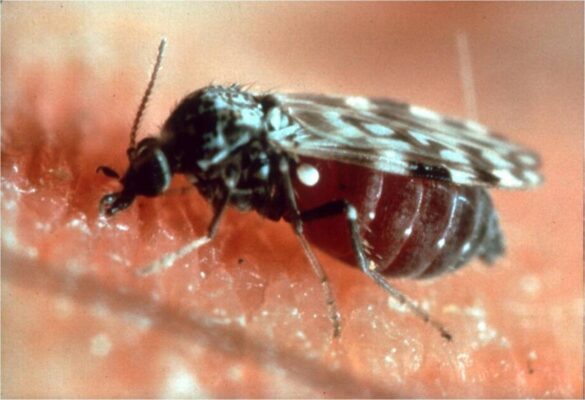Punkies, sand flies, and no-see-ums are all names for a very large family of tiny biting flies. Identifying the various species that fall under these names is not easy, because of the sheer number of them. The no-see-um is part of the Ceratopogonidae family. This family has over 4,000 species in it. Within the family, the genus Culicoides, which is found all across the world, has over 1,000 species. Within the United States, around 600 no-see-ums species exist. Those 600 species span 36 genera, with many subfamilies and species. Of those, 47 live in Florida alone, and other states also have numerous species. Clearly, this tiny pest is difficult to classify, simply because of the sheer numbers.
No-See-Ums that Live in the United States
Defining all of the 600 no-see-ums species that live in the United States would be impossible, but certain species are particularly dangerous to humans and livestock, and because of this they are worth noting.
No-See-Um Species That Transmit Disease to Humans
Ceratopogonidae Culicoides, is the most troublesome according to Science Direct. Within this subfamily of no-see-ums is the Leptoconops. These particular no-see-ums are known to attack humans and tend to carry diseases, especially in tropical areas. These no-see-ums are commonly found in the Southeastern United States.
No-See-Ums Species That Transmit Disease to Animals
Ceratopogonidae Culicoides variipennis is another family of no-see-um also found in North America. This family includes three species, Culicoides occidentalis, Culicoides variipennis, and Culicoides sonorensis. This group of no-see-ums is responsible for infecting farm animals with dangerous viruses, including the one that causes bluetongue, a serious disease that afflicts sheep and cattle. Epiootic Hemorrhagic Disease is another animal disease transmitted by Culicoides sonorensis within North America.
Other No-See-Ums That Bite Humans
Ceratopogonidae Simuliidae Phlebotominae is yet another subfamily of no-see-um found in the United States. Within this subfamily, which includes about 600 species, 14 are found throughout the United States. Only one of those bites humans, according to Purdue University. These insects are sometimes called “sand flies.” In the United States, this family does not carry disease, but some of the species that live in Africa and the Caribbean do.
Identifying No-See-Ums Species
Because of the small size of all species of no-see-um, identifying them when you see one is nearly impossible. Most of the species are defined by their behaviors and habitats, as identifying characteristics are not visible to the naked eye. Identifying the various species is best left to researchers who have the equipment and knowledge to make these complicated classifications.

